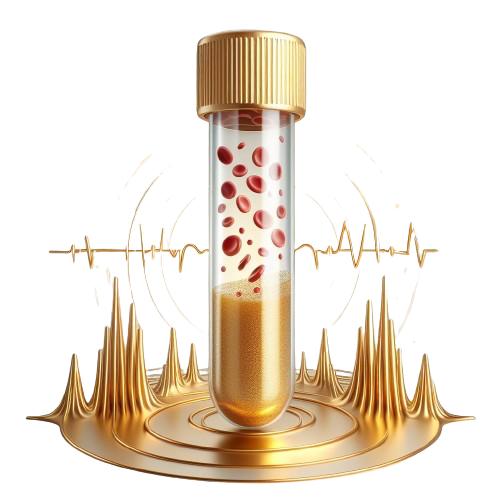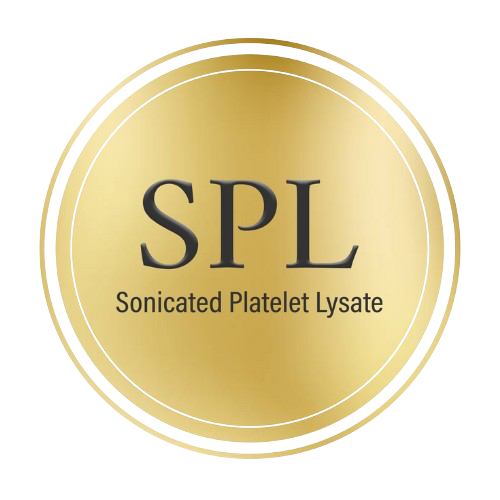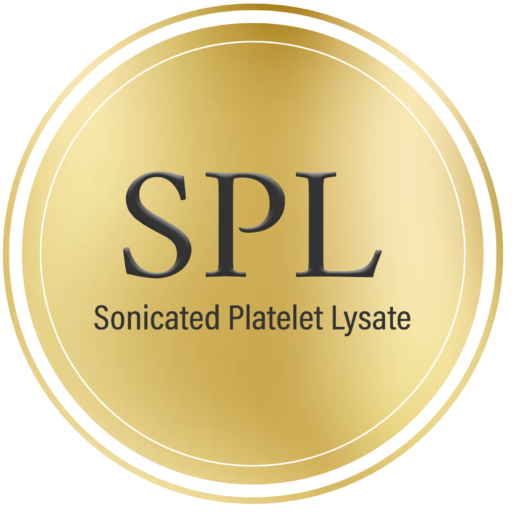Sonicated Platelet Lysate (SPL) Science

Sonicated Platelet Lysate activate hair follicle stem cells and mediates enhanced hair follicle regeneration
Sonicated Platelet Lysate (SPL) Science
Sonicated platelet lysate (SPL) emerges as a refined and increasingly popular derivative of platelet-rich plasma (PRP), captivating the realm of regenerative medicine. This in-depth exploration delves into the science behind SPL, dissecting its unique characteristics, the power of sonication, and the crucial role of growth factors in its therapeutic potential.
- From PRP to SPL: A Transformation Through Sound:
PRP, a concentrated source of platelets, serves as the foundation for SPL. Platelets, tiny cell fragments in our blood, harbor a treasure trove of potent growth factors and other bioactive molecules. However, unlocking their full potential requires activation. This is where the magic of sonication comes into play.
- Sonication: Unleashing the Power Within:
Sonication, the application of sound waves, acts as a key step in creating SPL. By applying controlled ultrasonic energy to the PRP preparation, the sound waves gently disrupt the platelet membranes, releasing the captive growth factors within. This process offers several advantages over traditional methods like freeze-thaw cycles:
- Enhanced Yield: Sonication is believed to result in a higher release of growth factors compared to other activation methods.
- Improved Quality: Sonication is thought to minimize cellular debris and preserve the integrity of the released growth factors, potentially leading to a safer and more effective product.
- Standardization: Sonication allows for greater control over the activation process, contributing to a more standardized and consistent final product.
- The Science Behind Regeneration: Growth Factors Take Center Stage:
The therapeutic potential of SPL hinges on its rich content of growth factors. These are naturally occurring signaling molecules that play a critical role in various cellular processes, including:
- Cell Proliferation: Growth factors stimulate cell division and multiplication, facilitating the regeneration of damaged tissues.
- Cell Migration: They attract specific types of cells to the injured area, orchestrating the recruitment of essential players involved in the healing process.
- Differentiation: Growth factors guide stem cells and other progenitor cells towards specializing into specific cell types, promoting the formation of functional tissues.
- Exploring the Growth Factor Pathways in SPL therapy:
SPL boasts a diverse array of growth factors, each playing a specific role in the regeneration process. Here's a closer look at some of the key players:
- Platelet-derived growth factor (PDGF): This family of growth factors, including PDGF-AA, PDGF-AB, and PDGF-BB, plays a crucial role in promoting the proliferation and migration of various cell types, particularly:
- Fibroblasts: These cells are the essential building blocks of connective tissue, responsible for producing collagen, the main structural protein of the extracellular matrix (ECM). PDGF stimulates fibroblast proliferation and migration, promoting ECM formation and wound healing.
- Smooth muscle cells: Crucial for blood vessel formation and maintenance, smooth muscle cells are stimulated by PDGF to proliferate and migrate, contributing to vascularization and improved blood flow in the injured or diseased tissues.
- Chondrocytes: These cartilage cells are essential for joint health. PDGF promotes their proliferation and differentiation, potentially aiding in cartilage repair in conditions like osteoarthritis.
- Epidermal growth factor (EGF): This growth factor plays a vital role in promoting skin cell proliferation and differentiation, contributing to:
- Wound closure: EGF stimulates the proliferation of keratinocytes, the main cell type in the epidermis, leading to faster wound closure and re-epithelialization.
- Skin rejuvenation: EGF promotes the proliferation and differentiation of various skin cells, including fibroblasts and keratinocytes, potentially contributing to improved skin texture and appearance.
- Vascular endothelial growth factor (VEGF): This potent growth factor is critical for:
- Angiogenesis: VEGF stimulates the formation of new blood vessels by promoting the proliferation and migration of endothelial cells, the lining of blood vessels. This enhanced blood flow delivers essential oxygen and nutrients to the injured or diseased tissues, facilitating healing and regeneration.
- Vascular permeability: VEGF increases the permeability of blood vessels, allowing essential nutrients and immune cells to reach the injured area, further promoting healing.
- Insulin-like growth factor (IGF): This family of growth factors, including IGF-1 and IGF-2, plays a multifaceted role in:
- Cell proliferation and differentiation: IGFs stimulate the proliferation and differentiation of various cell types, contributing to overall tissue regeneration.
- ECM synthesis: IGFs promote the production of collagen and other ECM components, essential for tissue structure and function.
- Anti-inflammatory and immunomodulatory effects: IGFs possess anti-inflammatory properties and can modulate the immune response, creating a favorable environment for tissue healing.
- Delving Deeper: Signaling Pathways Activated by Growth Factors
The effects of growth factors are mediated through intricate signaling pathways within target cells. These pathways involve a cascade of events triggered by the binding of the growth factor to its specific receptor on the cell surface. Here's a simplified overview of two key signaling pathways activated by growth factors in SPL therapy:
- Mitogen-activated protein kinase (MAPK) pathway: This pathway is involved in various cellular processes, including proliferation, differentiation, and survival. Upon growth factor binding, the MAPK pathway is activated, leading to a series of protein modifications that ultimately culminate in the activation of genes responsible for cell proliferation and differentiation.
- Phosphatidylinositol 3-kinase (PI3K)/Akt pathway: This pathway plays a crucial role in cell survival, proliferation, and metabolism. Growth factor binding activates the PI3K/Akt pathway, leading to the activation of various downstream molecules that promote cell survival, proliferation, and protein synthesis, all essential for tissue regeneration.
5: Harnessing the Regenerative Power:
The diverse biological activities of SPL have translated into exciting clinical applications across various medical specialties:
- Musculoskeletal Disorders: SPL is being explored for treating conditions like osteoarthritis, tendinitis, and ligament injuries. Its ability to stimulate cell proliferation, migration, and differentiation may promote cartilage repair, reduce inflammation, and improve functional outcomes.
- Dermatologic Applications: SPL therapy holds promise for wound healing, skin rejuvenation, and hair loss treatment. Its growth factors may accelerate wound closure, enhance collagen production, and contribute to improved skin texture and hair growth.
- Ophthalmic Applications: SPL eye drops are being investigated for treating dry eye syndrome and corneal injuries. Their growth factors may promote corneal epithelial regeneration and improve tear production.

